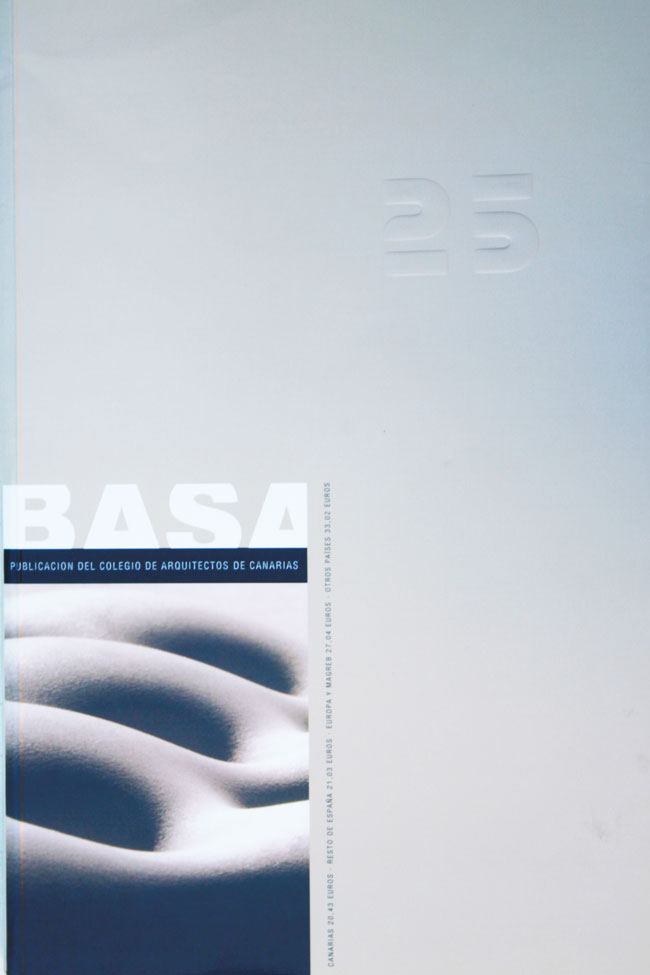
For centuries, some peoples have lived according to a principle of neutrality, following taoism. Far from making use of that in a theoretical way, we will only outline what in such a climate refers to the images, as if the discourse suddenly stopped to let a silent vision go by. Images of indifference, indifference of the image. However they speak, leaving aside the privileged field of space, wisdom, society of the Via. Images duplicate the words, language lends on imagination.
To follow the procedure of Lao tseu and Tchoang tseu, one must consider that at the beginning was the Tao, or Beginning, unconscious being, ineffable, unnamable, material but imperceptible, immobile, in short an undifferentiated space. According to primitive indifferentiation, the history of the changes of the world is not surprising, the outcome of the beginning conserves an immutability: the differences always evoke indifference. Moreover, Tao has, to be more exact, neither beginning nor end; it almost does not yield to a cosmic hypothetical genesis, even less when questions without answers usually arise, without meaning, without interest, on opposing notions, even contradictory.
It might appear that there is now little to say about this outcome in which life and death alternate without being distinguished in the background, into which sensitive beings rush or not, penetrated, however tenuously, by Tao. The Beginning, as it dispenses and produces form and things, it does so in such a natural way that we don’t think about glorifying it, in entering into contact with it; in the undifferentiated, the differences slide easily one over the other and in these movements, this folding, each one settles down and owes nothing to anyone. To provoke an inflection of the natural course, to reflect too much on it, determine actions that divert and disorientate human tranquility.
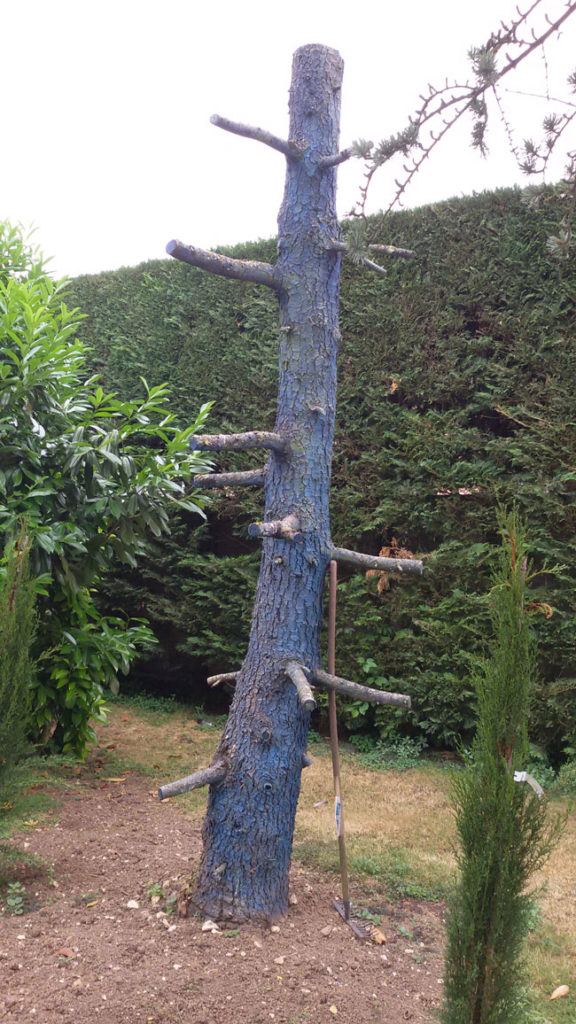
Innocence and the abandoning of Tao lead to plenty and peace; he who presumes authority, science, superiority, alters the economy of men; like the sea, which is the image of the Beginning, everything unfolds, fuses in a deaf power; the homogeneity of matter corresponds to this firmness of Tao that in the distance (opening an absolute separation), and almost magically, not performing, performs. Tao is not a transcendent beginning, it defines on the contrary the immanent neutrality to terrestrial things; if from it derives a naturalist vision, we can attach other innumerable points of view to it, all the more so as a last word does not exist, or a last image: « the Beginning, indifferent, impartial, lets ail things follow their path without influencing them. It does not expect any title. It does not act. As it doesn’t do anything, there is nothing that it doesn’t do. Apparently, with our human way of seeing, the times follow one another, the universe changes, adversity and prosperity alternate. In truth, these variations, effects of a single law, do not modify the unmovable whole. All contrasts lind their place in this whole, without crashing, like in marshland, all kinds of grasses live together; like on the mountain, trees and rocks mix together […] The nature of the Beginning, the nature of the Being, are incomprehensible and ineffable. Only the limited can be understood and expressed. The beginning acts as the pole, as the axis, of the universality of beings, let’s say that it is the pole, that it is the axis of universal evolution, without trying to understand or explain[1]. »
The coexistence of differences, the relative anarchy of that infinite repetition that is indifference, the proliferation of shades that intensely and insensitively pass from one initial degree to an ultimate degree (the differences of nature are equal to differences of degree), all that cosmic game is familiar to us; however, we insist on the importance of notions often forgotten (emptiness, fluid, what is malleable): one usually decides on the solid, the hard, the full. Surprising illustrations describe the role of the no when the gaze is only on the yes; then, through approximations one goes from the positive to the negative: the two associate, combine and in a certain way coincide. Thus the non-being – what goes unnoticed – penetrates the most compact bodies and attaches itself. We see the efficiency of the silent nonperforming sprout. Suddenly, we see how nothing proceeds from the being: « a wheel is made of thirty radii, but it is thanks to the central emptiness of the piece in which these are placed, that these go round. Jugs are made of clay but what is useful is their cavity. The holes that make up a door and window are the essential part of a house. The efficient, the result arises from the non-sensitive[2].”
Emptiness acquires a considerable place in the indifferent layers of things, it is that absolute distance that separates and at the same time joins the differences. Emptiness prefigures water, it belongs to those elements that are insinuated in spite of the rigidity of the structures and the signified. If emptiness and the non-being intervene they will not start any dialectic debate; the antinomy gives rise to an intimate interpenetration of notions that are on the other hand opposed. The best relationships exist between differences, that because they are not but others, they belong to universal neutrality.
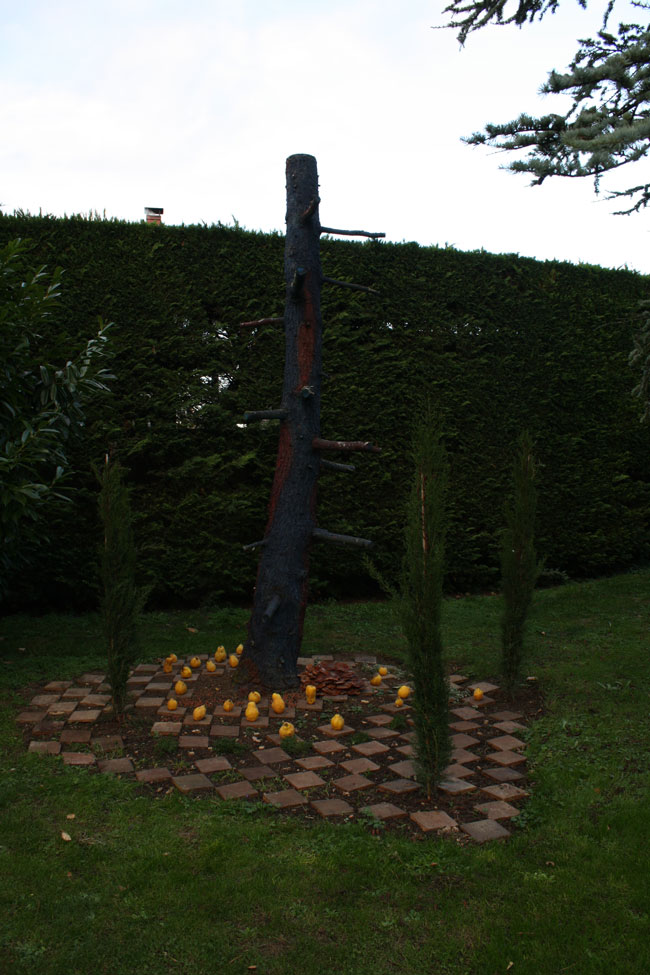
Or even better, the harmony and the chaining of the contrary bring about paradoxical properties: the efficiency of the inactivity is real while action only produces inefficiency. According to the correlation of the being and the non-being, the contrary rub off on each other and a reversal of intentions is carried out, of the first differences: “being and nothing, easy and difficult, long and short, high and low, sound and tone, before and after are correlative notions. Being like that, the Wise one is useful without acting, teaches without speaking. He allows every being to be without counteracting them, to live without monopolizing them, to act without exploiting them. None of the effects produced are attributed, and as a consequence those effects remain[3].”
The same old taoist story of the Wou-wei (not to act) begins, the intention and the original significance of the notion are reversed and their opposites are exhibited, as if an act of the spirit had unconsciously diverted the natural course. The calculation, the abuse of reason disturbs the actions: what is expected, what has to be fulfilled at once has been forgotten and the opposite thus replaces it. The Taoist understood that active and secret power of Indifference that reverses the yes into a no, the no into a yes: « the Wise one, stepping backwards, goes forward; not looking after himself he preserves himself. As he doesn’t seek any advantage, everything is an advantage for him[4]. »
More than a psychological law the taoist has discovered what governs the heart of things (among them men). Neutrality, more than an apathetic immobility, than an undeserving rest, in its way is active: it multiplies the differences to select the indifference in them; in the indifferentiated plurality is drawn a unified difference; single, the equivalent of neutrality, they are capable of power and efficiency, overcoming everything that points to the same efficiency: « ls it not evident that emptiness, peace, happiness, joyfulness, apathy, silence, the vision of the whole, non-intervention are the root of whatever good[5]. »
If we take possession, without rushing around, of non-acting, then according to that procedure that goes beyond nihilism to reunite with indifference, the spontaneous and living course of nature is reflected; man participates, as other elements, in that great nature in which there is no oppression. Sovereign equality of beings is not that of the herd but that of the indistinction in the distinction, of the indifference in the specificity (human or other), of the neutrality in the different alterability (although originality again subtly slips through in the unlimited). The decomposition of colour, of values and beliefs is no more than a manner of speaking, if we want, through the plurality of interpretations, we would confuse various positions. At least, let us listen to the voice of neutrality, of inaction, of the man-object parallel (through the looking glass, while the objectivity, the objectivization, singleness, are caricatures of indifference, the vision of reflections as those imposed in a mirror, because it produces a theory of vision naturally, of simulations or of doubles, fine and beautiful transparent wrappings carrying messages, forms and spectacles): it makes glory from non-acting, ambition, craft, science. Non-acting does not produce wear. It is impersonal. It returns what it has received from heaven, without keeping anything for himself. It is especially an emptiness – the superman does not exercise his intelligence except in the manner of a mirror. He knows and gets to know, without attraction or repulsion following on from it, without there remaining a single print. Being so it is superior to everything, and neutral with respect to them[6]. »
The Tao leads to inaction, to an intense function of reflection; naturally this can lead to the insensitivity of the indifferent, so that everything is the same, happiness or sadness, victory or defeat; it seems that one must see there above all the richness of the indeterminate and not the poverty of a negativism; intimately linked to emptiness, the image of the mirror, the repetition of the echo give us approximate appreciations of the diversity inside neutrality: « to which it belongs in its nothingness, all beings manifest themselves. It is sensitive to its impression as calm water; it reflects them like a mirror; it repeats them like an echo. United to the Beginning, through it is he is in harmony with every being. United to the Beginning, he knows everything through superior reasons, and no longer uses, as a consequence, his different senses, to know in particular and in detail. The true reason of things is invisible, inaccessible, undefinable, indeterminate[7].”
The liberation of the images in the mirror accompanies the free immaterial course of the imagination; and nevertheless the indifferent sometimes carries out reducive work, but how? According to an optical procedure that recalls the cinematographical zoom, or rather a distance (an absolute distance, an emptiness, an indifference) moves between the object and the sight; that distance increasingly gets bigger with, a jump to infinity, if the occasion rises; the yes, the no, the superior, the inferior, the possible, the impossible vary according to the points of view but with that procedure, those details seem (from the top of the mountain) insignificant and a global indifference becomes detached: Nature is distinguished by the floating of the indeterminate, the out of focus character of indifference.
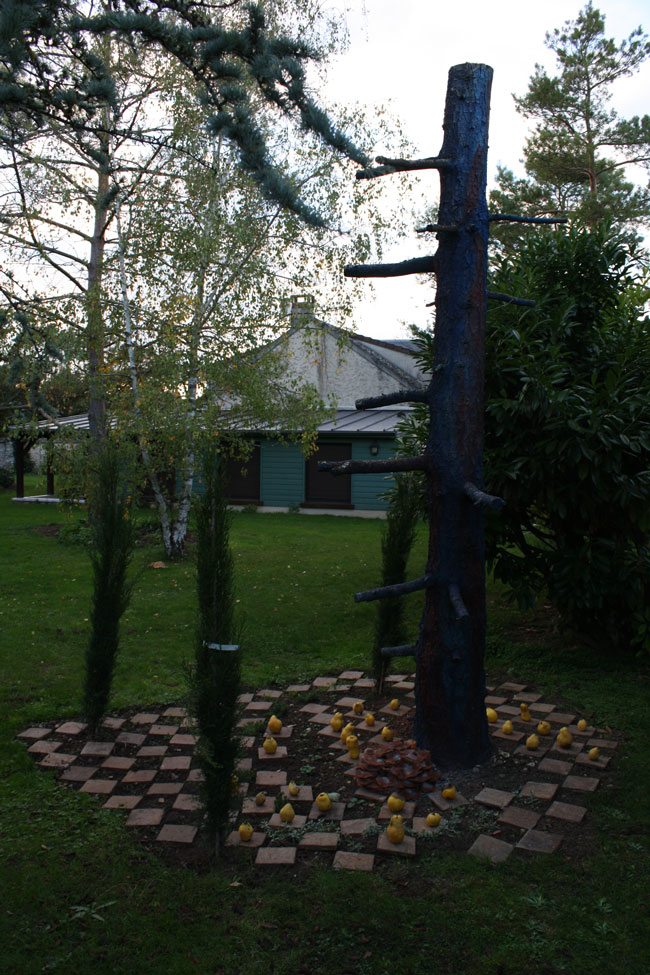
Because there is almost nothing left to say, an indifferent pitch of voice is heard, the gaze glides over surfaces of water, infinite and calm. After the emptiness, the water spreads its serene clarity; the level of water (the sea) is the ultimate reference of measures, the Tao does not rush, he takes things calmly, in that unlimited, pure space. The ocean is that receptacle in which the waters flow; the fluidity and rest of the natural element easily support the body of the newly-born, genuine image of the Tao; the vision of Lao-tseu is located in the mythical; wisdom is no more than the innocence of childhood; indetermination, absence of finality, until darkness mixes with that magnificent floating over infinite waters: « I am colourless-like and indefinite; neutral like the infant that has still not had his first emotion; without an aim and without a goal. Vulgarity is plentiful, while I am poor, and ignorant, from purifying myself so much. They seem full of light, I seem dark. They search and scrutinize, I remain concentrating on myself. Indeterminate like the immensity of the waters, I float unceasingly, they are full, while I am slow to catch on and uneducated[8]. »
That primordial image has not managed to become imprinted on us. The floating of the indeterminate continually torments us; the boy taoist is a Moses that continues resting on the river (who has not been rescued, from the waters). Taoism is not an evocation of the golden age, but it wants at all cost to indicate what in our world proceeds from an indifferentiated. Nietzsche again takes up the image of floating on water, evoking a mysterious boat, in the moment in which we fonder “in an eternal unconsciousness[9]. »
Or better, for Nietzsche, a beautiful image accompanies the rocking of the boat al night: « I have seen a boat of gold glitter over the nocturnal waters, a golden boat that they rock, that was sinking, vanished and again made a signal[10]. »
The persistence of the image of the boat should no longer surprise us as we know that it symbolizes innocent wisdom, simple indifference; the boat is a mediator between man and water; if perhaps a neutral element connects the three notions: « Ordinary people, however, men of the people – are similar to the river on which a canoe continues floating[11]. »
The boat is no more than an innocent, dead leaf rocked by the light breeze, secret strength of the laminate of water. The Wise one – he would refuse to be called that – as he hardly differentiates between the yes and the no, can carry out great deeds without realizing. Of course the taoists tell us about their great deeds as if they were fables: the causality is put to the test, even suppressed; the Wise one then proceeds entirely from the matter that surrounds him: the wind and the water carry him, he crosses fire, metal and stone. The spectators are astonished, and when they question the wise taoist who they had taken for a poor, more or less ridiculous man, they discover that this had not idea about the danger at all and in fact even what he was doing (« having asked him his secret about penetrating rocks and remaining within fire, that man said: What is a rock? What is fire?[12]« ).
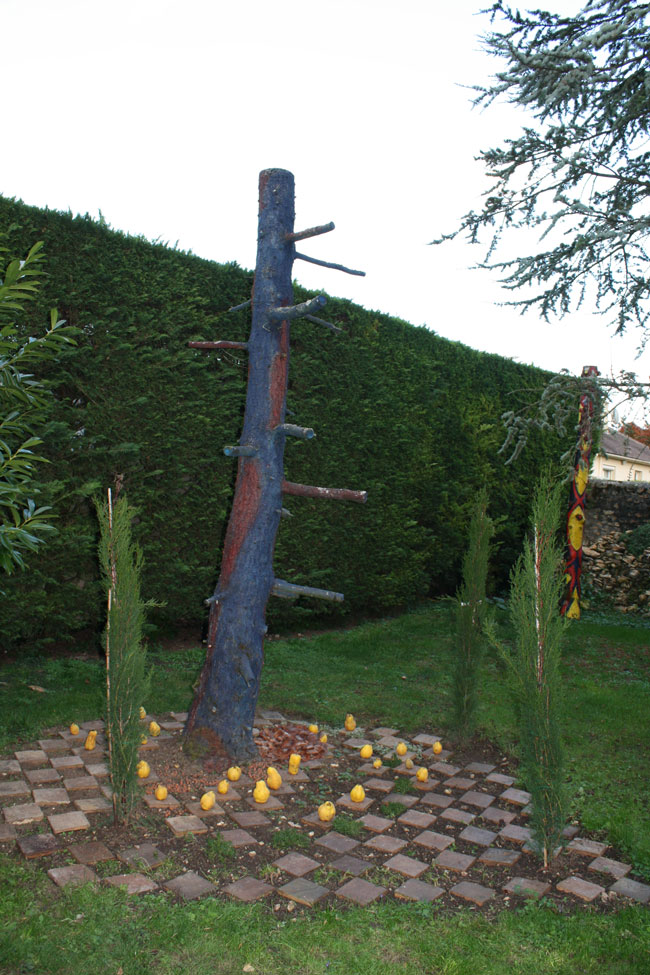
The taoist is an ordinary man, without qualities, who joins natural elements easily because his conscience and his passions do not intervene so that he could imagine what he is doing, and for him to feel emotion about it. He guards no secret, if he adopts the world that surrounds him so easily it is because he achieves this almost without wishing to; his abandon, his unawareness overcome the obstacles; he lives in the tranquility of the being with no memory, he does not expect anything other than oblivion; then he is like a fish in the sea, completely happy, that is, he moves around freely, death leaves no mark on his body, he doesn’t fear it, he walks near the rhinoceros or the tiger; a layer of indifference covers him, he glides over everything: « the unconsciousness acts as a protective film. Nothing leaves its mark on his body, when the spirit feels no feeling. No being can harm the Wise one, surrounded by the integrity of his nature, protected by the freedom of his spirit[13]. »
The taoists do not become complacent in a kind of inertia, on the contrary, they unmask the values preached by the priests and the wise men; however, goodness and equity do not impede them from agreeing with the lords: conformism, morality, politics, a complete social lifestyle is put to the test. The taoists use images (allegories, comparisons), mise-en-scene (dramatization): in the government of societies, non-acting stands up to tyranny and political banderolism. A relative anarchy, an independence on every level, a natural laissez-faire, such are the premises of a social existence in which man can avoid conflict and war. The taoist, in a world of reflections and indifference, where there is nothing but a difference of degree, between watchfulness and sleep, the idea and the image, goes about living without pain or sadness and in relative happiness. The neutrality of the world incites him to indifference: he discovers, without wanting to, a therapy of feelings, of passions, of ideas and meanings; indeed, the absence of feelings and meanings resolves affective or ideological conflicts as if by a miracle; of course we won’t enter into an intellectualist perspective (refusal of passions), spiritual (refusal of body) or mystical (purification) but we discover that – without the wish of discovery actually disturbing the result – neutrality best translates our feelings, allows us to confirm ourselves instead of destroying ourselves mutually, and raises them to a second level of existence; beyond an absence of passion or of a fading of meaning, an indifference of the indifference devalues, revalues and lets people live. The duplication of the indifference is neither reflexive, nor negative, it is a simple lethargy of neutrality: to do something, you don’t have to say anything, sometimes only remain listening to the voice of indifference. An art of living without the advice of wisdom, reason or of the society being eternally registered, such is Tao that moves without being moved, that fills the individual with attractions emptying him of his forgetfulness, which embraces plurality, contemplating the unity in it, and creates incredible repeated differences.
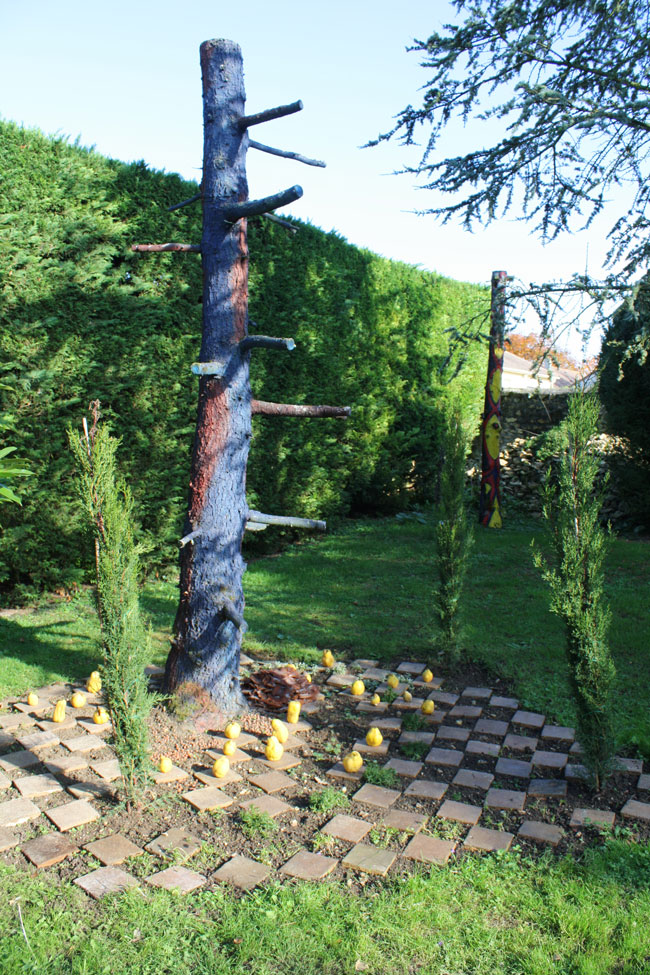
From the political to poetry, together with science, taoist images impose themselves on us: water, fire, earth, and air mix together; some impressions, some simulations, some doubles invade us; an incessant, vertiginous movement, which according to the information is speeding up, accelerating or immobilized, it doesn’t stop dazzling us. But if the vision of those spectacles has not impressed us so much, then the images become faint, they begin to look alike, coming together in a grey indifferentiation; at the same time the voice of neutrality says that the usual optics has made us blind and that now (clearly as before), that from now on, the eternal return of indifference possesses us and encourages us. If Lao tseu could say, among other things, that « the one who does nothing to live, is wiser than the one who goes to great pains to live[14]« , then it is not sa much a case of selecting and of repeating beautiful words forever, but of doing in such a way that they have a repercussion on us and away from us and that they reach other words and images: the fabulous race of the world can be translated into a simple tale of taoist images (because there is nothing to say, but multiple discourses, multiple suns), from irony to beauty, together with distancing, the numerous shades of life are recreated.
Georges Sebbag
Références
Georges
Sebbag, « Taoist Images », Basa,
n° 25, second semestre 2001 [parution effective en juillet 2002]. La revue a
traduit en espagnol et en anglais « L’indifférent », « Indifférent
comme un ready-made » et « Images taoïstes », trois textes
de Georges Sebbag sur l’indifférence. « Images taoïstes » correspond
au chapitre VI de De l’indifférence, D.E.S.
de philosophie de Georges Sebbag datant de 1965, qui sera intégralement édité
par Sens & Tonka au premier trimestre 2002.
Notes
[1] Tchoang tseu, 25 J., in Léon Wieger, Les Pères du système taoïste (PST), 1950. There is a problem of translation; we will propose, a little to chance, some French versions of one same Chinese text. There is for example the end of 25 J translated by René Brémond (La Sagesse chinoise selon le Tao, 1955): « our words are impotent to define Tao; they reach out poorly to describe beings. Tao is the ultimate of all beings. It can’t be reached either by discussion or by meditation. It is ineffable and inaccessible to thought.”
[2] Lao tseu, Tao Te King, 11 (PST). « Thirty radii come together around the piece in which they fit, the hub. The use of the cart depends on the emptiness. We model clay to make jugs. The use of the jugs depends on their cavity. Doors and windows are opened to make a house. The use of the house depends on its empty space. That is why the utility comes from the being, the use comes from the non-being. » (transl. Stanislas Julien, 1842).
[3] Lao tseu, 2 (PST). « The difficult and the easy are produced mutually. The long and the short give each other their form. The high and the low show their mutual unequalness. The tones and the voice harmonize together. The before and the after are a consequence of each other. From this the Holy man makes non-acting his occupation. He makes his instructions be silence. Then all beings start to move, and nothing is denied them. He produces them and does not appropriate them. He perfects them and does not take them into account. Having accomplished his merits, he does not cling to them. He does not cling to his merits; that is why they do not leave him.” (St. Julien).
[4] Lao tseu, 7 (PST).
[5] Tchoang tseu, 13 A (PST).
[6] Tchoang tseu, 7 F (PST).
[7] Lie tseu, 4 N (PST). « Forms and things are shown to he who is attached to his own being. In his movements, he is like water; in rest, he is like a mirror and in his replies he is like the echo. That is why the Tao is a faithful image of things: (although) things are opposed to the Tao, the Tao does not oppose things. He who is good with the Tao does not need ears or eyes. He makes no use of his strength or of his conscience. On the contrary, if someone looks for the Tao through his sight and ear and if he aspires to him with his body and conscience, he is not looking correctly. He (he really looks for it), fixing his gaze directly in front, without realizing that he is already behind (him). When the Tao is used, he fills the emptiness; when he is placed on one side, he is no longer found. He is not far enough so that there is a need for a rigorous investigation to find him; but he is not near enough for him to be discovered by chance. It is in the silence how he is reached. » (Le Vrai classique du vide parfait, transl. Benedykt Grypas, 1961).
[8] Lao tseu, 20 (PST). « I, am constantly resting like the water in calm and, like it without any precise shape. Indifferent like the newly-born who has not yet smiled, like the driver without a destination. Vulgar men have a quality of the superfluous: I am stripped like a tramp; my heart is that of a simple man, so much so that I have purified myself. They shine with a bright shine: I seem dark. They search and scrutinize: I remain concentrating on myself. Unstable like a rough sea, I am not fixed to anywhere. They are learned: I consider myself to be contemptuous because I am slow to catch on » (R. Brémond). “I, am quiet without a gesture or sign of emotion, like the child who has not yet smiled; not shown the least sign of awareness; stripped of everything like a non-home. A wandering soul and alone. All men have something superfluous, I, I seem poor and abandoned. Dry wood, dead ashes. I have the heart of a stupid man, simple in spirit. How clumsy and silly! Ordinary men are clear and luminous. I, I seem dark and dim. No haste and no breath. Ordinary men are inquisitive and meticulous. I, I seem absent and distracted. When in fact I am abstract. I wander like a limitless ocean. Free like the high winds. And wherever the spirit blows, there reigns liberty. Every man is easy to handle. I, I seem unsociable and base; as if useless in a barbarous country » (Jacques Lionnet, 1962). “[…] I am a wave like the sea; I float as if I didn’t know where to stop […]” (St. Julien).
[9] Nietzsche, Le Gai savoir, appendix « La barque mystérieuse ».
[10] Ainsi parlait Zarathoustra, part. III, « L’autre chant de la danse », §1.
[11] Ibid., part. II, « De la victoire sur soi-même ».
[12] Lie tseu, 2K (PST).
[13] Lie tseu, 2D (PST).
[14] Lao tseu, 75 (PST).